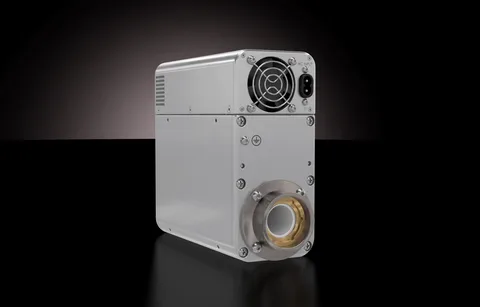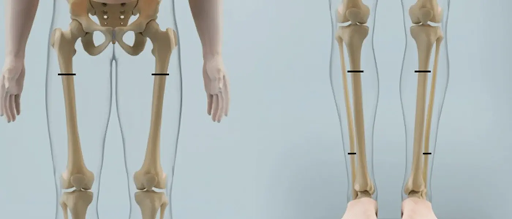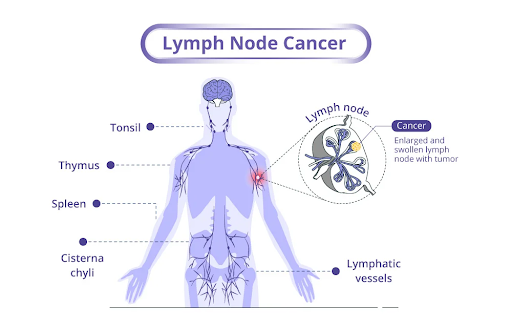How Polyclonal Antibodies Help Detect Mitochondrial Alterations in Pancreatic Cancer?

The pancreas is a long, flat gland, usually 6 inches long. It is located behind the stomach and in front of the spine. It helps with digestion and controls blood sugar levels. The pancreas must perform its function properly; otherwise, it can lead to severe conditions, like diabetes, pancreatitis, and pancreatic cancer.
Pancreatic cancer is one of the most aggressive and deadly forms of cancer that is hard to diagnose at early stages. It shows resistance to many treatments.
Pancreatic cancer develops when cells in the pancreas undergo genetic mutations that cause them to grow uncontrollably and form a tumor. These cancerous cells often develop quietly, showing little to no symptoms in the early stages. Over time, they can invade nearby tissues and spread to distant organs like the liver and lungs—a process known as metastasis.
Some factors that contribute to pancreatic cancer include:
- Smooking
- Chronic pancreatitis
- Family history
- Obesity and type 2 diabetes
- Age
These factors can contribute to damage in key genes like KRAS, TP53, CDKN2A, and SMAD4, which regulate cell growth and repair. As a result, this affects the mitochondrial function.
Disruption of Mitochondrial Functions in Pancreatic Cancer
Mitochondria are small, bean-shaped organelles found in most cells of the body. They are often called the “powerhouses” of the cell because they produce the energy that cells need to function and survive. But their role goes far beyond just energy production.
Key Functions of Mitochondria
- Energy Production (ATP Generation)
- Regulation of Cell Death (Apoptosis)
- Calcium Storage and Signaling
- Production of Reactive Oxygen Species (ROS)
- Support of Metabolism
However, in pancreatic cancer, mutations in key genes—such as KRAS, TP53, CDKN2A, and SMAD4—disrupt these mitochondrial functions.
This leads to:
- Altered metabolism: Cancer cells often switch from oxidative phosphorylation to glycolysis, known as the Warburg effect.
- Resistance to apoptosis: Mitochondria in cancer cells often exhibit altered expression of proteins involved in cell death regulation.
- Reactive oxygen species (ROS) production: Mitochondrial dysfunction leads to elevated ROS levels, contributing to DNA damage and tumor progression.
These alterations are often associated with changes in the expression or structure of mitochondrial proteins. Detecting these changes can help researchers learn how pancreatic cancer develops and identify potential biomarkers at an early stage. Here is where polyclonal antibodies (pAbs) come into play.
What is the Role of Polyclonal Antibodies in Detecting Mitochondrial Proteins?
pAbs are a mixture of antibodies that are produced by different B cells. They recognize and bind to multiple epitopes on the same target molecule. They are known for their sensitivity. So, they can help identify potential biomarkers of pancreatic cancer, even if present in very low amounts.
So, here is how pAbs are helpful in detecting mitochondrial proteins:
Recognize Mutated or Altered Proteins
Pancreatic cancer is caused by changes (mutations) in genes like KRAS, TP53, and CDKN2A. These mutations can change the shape or function of proteins in the mitochondria.
Monoclonal antibodies (mAbs) bind to one small part of a protein. But if that part changes, they may not work. Polyclonal antibodies, on the other hand, can bind to many parts of the same protein. So, even if one part is damaged, pAbs can still find and stick to the rest.
For instance:
Rabbit PTCD1 polyclonal antibody is used to detect changes in expression levels or structure in pancreatic cancer tissues. PTCD1 is involved in mitochondrial RNA metabolism. Its dysregulation can lead to mitochondrial dysfunction.
Detect Low-Abundance Mitochondrial Proteins
Some mitochondrial proteins are present in very small amounts, especially in the early stages of cancer. These are hard to find. Polyclonal antibodies are very sensitive. They can detect even tiny amounts of protein. This helps scientists find early signs of cancer, when treatment can be more effective.
Study Subproteomes
Mitochondria have many proteins. Each one has a special job. Some help make energy. Others help cells die when needed. Some help in moving materials in and out of the mitochondria.
Scientists group these proteins into smaller sets, called subproteomes. Polyclonal antibodies can be made for each group. This helps researchers study one part of the mitochondria at a time. In pancreatic cancer, this helps show which part is not working properly.
Investigate Protein Interactions
Proteins often work together. They form teams inside mitochondria. In cancer, these teams may break apart or form the wrong way.
To study this, scientists use a method called co-immunoprecipitation (Co-IP). Polyclonal antibodies are useful here. Because they bind to many parts of a protein, they can pull it out along with its partners. This helps scientists see which proteins are working together—and which ones are not—in pancreatic cancer cells.
Analyze Mitochondrial Diseases
Mitochondrial problems are also found in other diseases, like:
- Parkinson’s and Alzheimer’s
- Diabetes and obesity
Scientists use pAbs to compare proteins from these diseases with those in pancreatic cancer. This helps find shared problems or special markers for each disease. It may also lead to new treatments.
Study TOMM Complex
The TOMM complex is a group of proteins. It helps move other proteins into the mitochondria. This process is important for keeping mitochondria healthy.
In cancer, the TOMM complex can be damaged. Polyclonal antibodies for proteins like TOMM20 or TOMM40 can show if this system is working. If it’s broken, it may be a sign of stress in the cell or a sign of cancer.
Analyze Mitochondrial Autoantibodies
Sometimes, the immune system makes antibodies that attack the body’s own mitochondria. This can happen in cancer. Polyclonal antibodies can help find these autoantibodies in blood or tissue. If found, they might help diagnose cancer or track how it is growing.
Support a Range of Experimental Methods
Polyclonal antibodies are very flexible. Scientists use them in many lab tests, such as:
- Western Blot: To measure protein levels
- Immunohistochemistry (IHC): To see where proteins are in tissues
- Immunofluorescence (IF): To see where proteins are in cells
- ELISA: To measure protein levels in blood or fluid
- Flow Cytometry: To check protein levels in many cells at once
These tools help researchers see how mitochondrial proteins change in pancreatic cancer.
The Bottom Line
Mitochondria change a lot in pancreatic cancer. These changes affect how cells use energy and stay alive. Finding these changes early can help doctors treat cancer better.Polyclonal antibodies are powerful tools. They can detect small or damaged proteins, study how proteins work together, and help scientists learn more about cancer. In the future, pAbs might even help doctors find pancreatic cancer early and choose better treatments. However, make sure you buy polyclonal antibodies from a reliable source. This helps ensure you get reliable and accurate results!







